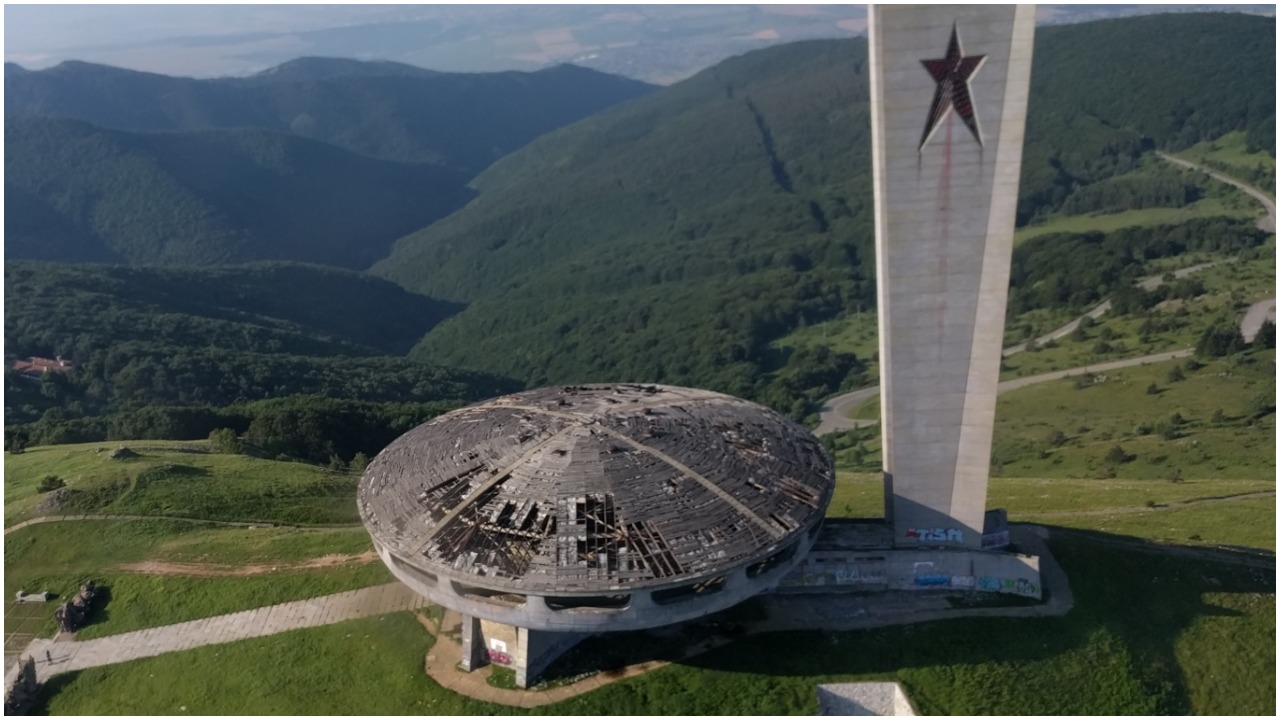Buzludzha Monument: The Memorial House of the Bulgarian Communist Party is associated with three historical events. It stands on a mountain peak in Bulgaria as a testament to the memory of Hadji Dimitar (who passed away in 1868), of the Bulgarian Social Democratic Labor Party (founded in 1891), and the battle between the fascists and partisans during the Second World War.
The memorial itself was opened in August 1981. The Turkish word “Buzludzha” means “icy,” but for some time, the peak of the mountain was initially named after Haji Dimitar.
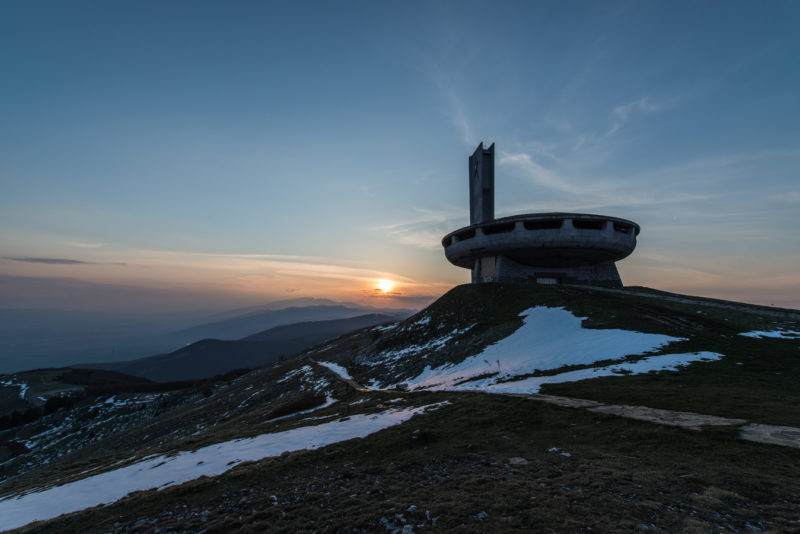
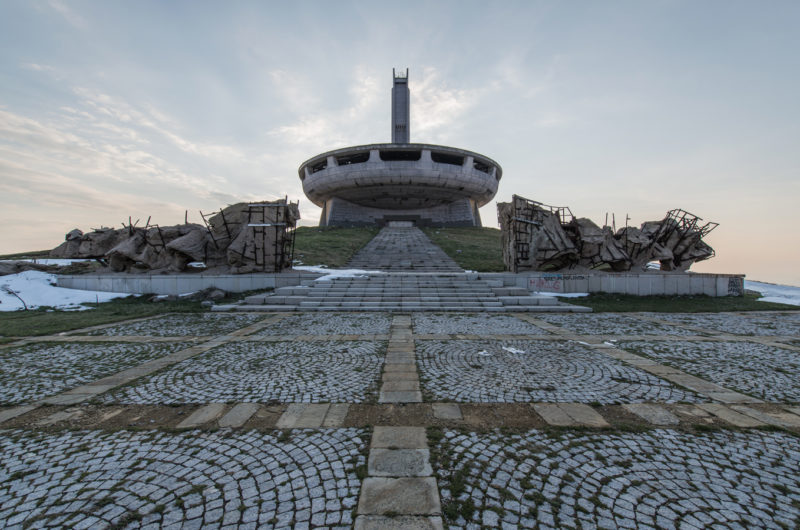
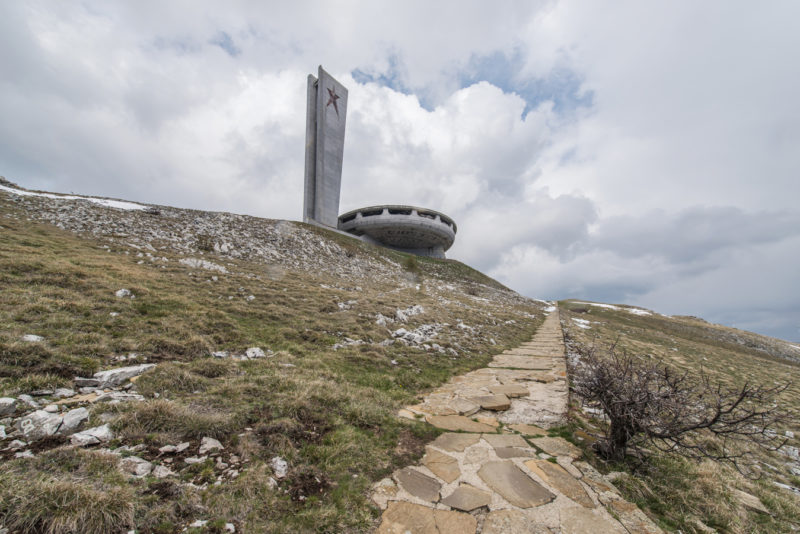
Hadji Dimitar was one of the most famous Bulgarian revolutionaries. Together with Stephen Karaj, he formed a detachment in Romania in 1868 in order to launch attacks on the Ottoman strongholds in Bulgaria. Together, they had achieved several victories.
On July 9, Karaj was wounded in battle and captured by the Ottomans. On July 18, 1868, the last campaign of the 58 rebels, led by Hadji Dimitar, took place. The Ottoman forces were large, and they swiftly defeated Dimitar’s detachment. Dimitar himself was mortally wounded during this battle.
In April 1876, the nationwide revolt in Bulgaria led to the Russian-Turkish War (1877-1878). Lasting from January 5 to January 9, 1878, the last battle of this war took place at the Shipka Pass.
At Shipka, the Ottoman troops surrendered. Following that, on March 3, 1878, the Russian coalition won the war. In 1934, the monument at Shipka was installed. Bulgarian independence had been restored.
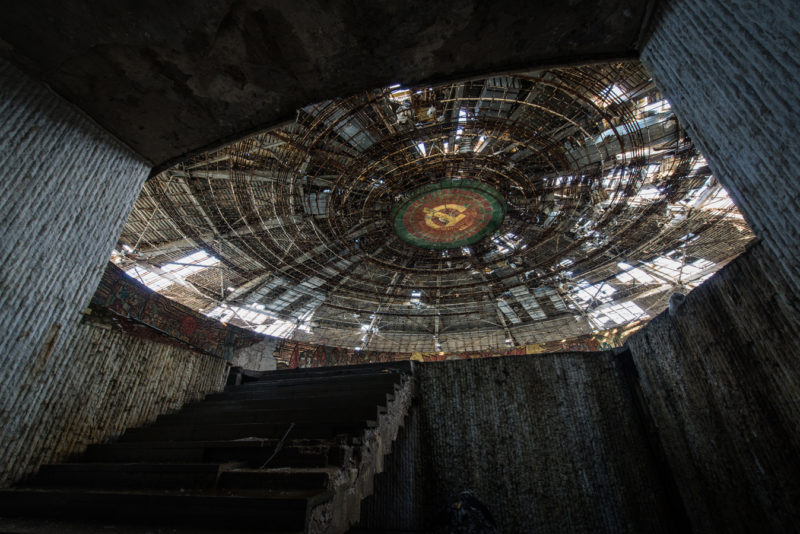
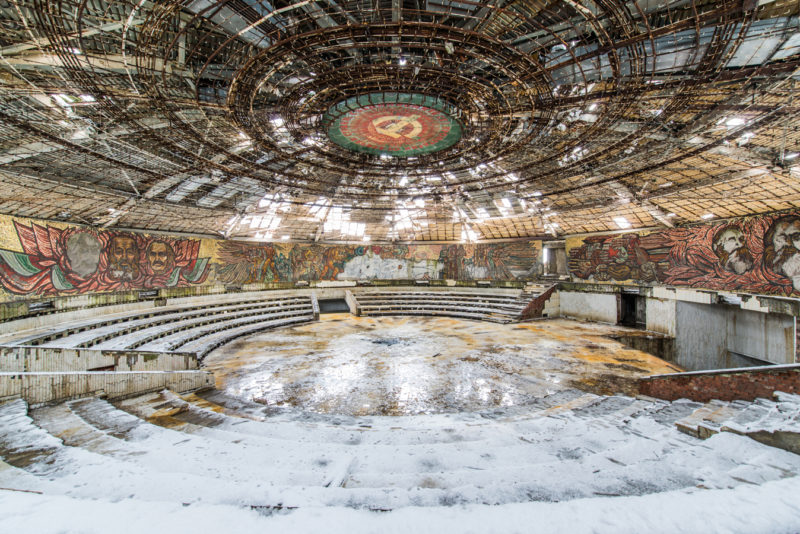
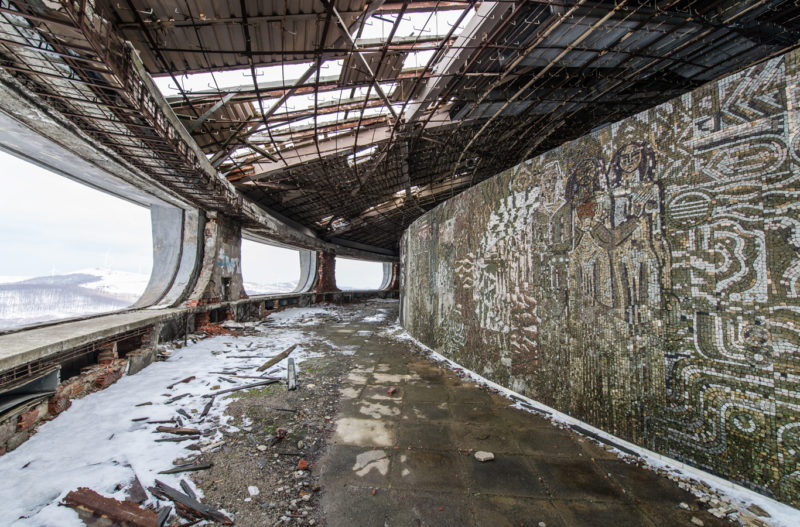
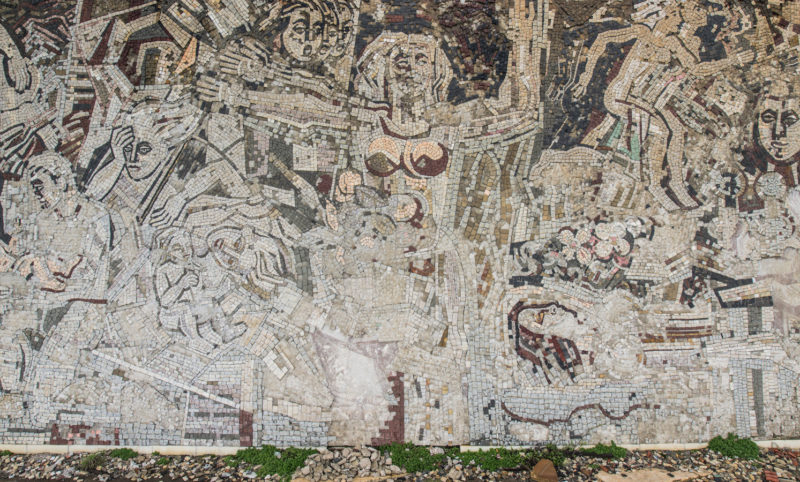
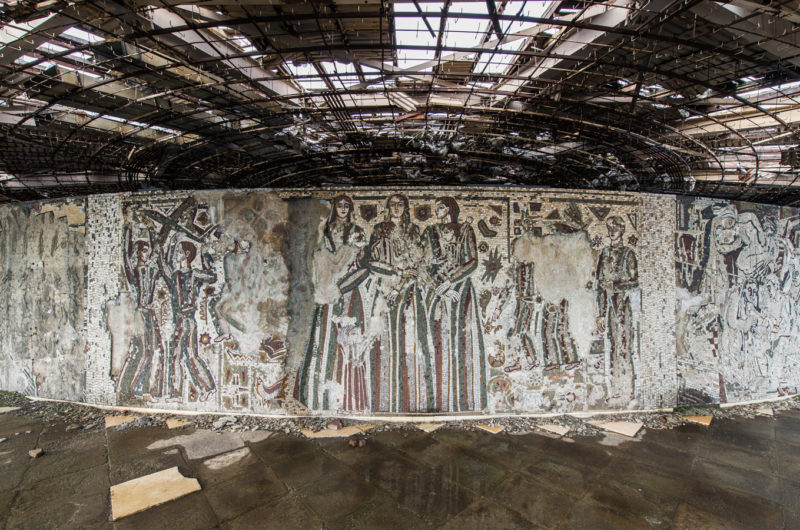


As mentioned above, one of the purposes of this memorial was to commemorate the Bulgarian socialist movement. The movement was formed by political philosopher Dmitry Blagoev in 1886 after his translations of the books Capital of Karl Marx and Communist Manifesto.
The socialist groups met in secret as the post-Ottoman state condemned them in Bulgaria. Blagoev decided to unite them in the Bulgarian socialist organization. Buzludzha served as a convenient place where they could meet under cover of the celebration of the sacrifice of Hadzi Dimitar.
On August 2, 1891, the first socialist congress of Bulgaria was held at the peak of Buzludzh. The Bulgarian Social Democratic Party, the forerunner of the Bulgarian Communist Party, was officially formed on the same day.
In 1936, the Buzludja Lodge guest house was opened. The purpose behind this building was to offer accommodation to tourists visiting the peak of Buzludzha.
During the Second World War, Bulgaria was transferred to Nazi Germany. The Bulgarian Communist Party played an important role in organizing the national guerrilla resistance movement.
In September 1944, the Soviet Red Army entered Bulgaria after ousting Nazi troops from Eastern Europe. Two years later, a single-party system was established. A massive thank you to Source: www.buzludzha-monument.com





The peak of Buzludzha is an important place in relation to such events since the Bulgarian socialist movement originated there.
By 1961, three monuments were uncovered on the mountains: a statue of Hadzhi Dimitâr, an engraved relief of Dimitâr Blagoev’s 1981 Buzludzha Congress, and a part of the forces that had battled against the fascists during WWII.
There were plans to create a fourth monument in the form of a star on the mountain. Architect George Stoilov proposed to build a tower in the center with a star and with a ring on six columns. However, at the peak there were strong winds with low temperatures, and Stoilov had to redesign his project.
He decided to make his monument in the shape of a saucer at the top of a tower. He incorporated both ancient and futuristic motifs into the design.



Construction of the Buzludzhe monument began on January 23, 1974. Over 6,000 people contributed to its creation: engineers, designers, painters, sculptors, volunteers, and 500 soldiers from the building corps.
There were walls with mosaics inside that illustrated the allegorical history of the Bulgarian Communist Party (scenes of space travel, military operations, and communist workers). The mosaics covered an area of 510 square meters and were made of cobalt glass. On the outer ring of the monument, the mosaic was made of natural stones.
The construction of the tower took two years. Its eventual height was 70 m (230 ft). The tower foundations descend 16 m (52 ft) into the ground.
Glass stars, which are located on the north and south sides of the tower, were considered the largest in the world as they are 12 m (39 ft) in diameter. They have the appearance of rubies but are made of glass weighing 3.5 tons apiece and were made in Kyiv.
The architect suggested that the construction of the memorial building should be funded from the state budget since he saw this as a “monument to the people” and believed that citizens should voluntarily donate funds for its construction.
The construction of the monument cost 14 million leva (the equivalent today would be 35 million US dollars). The population at the time was 8.8 million Bulgarians, and 16.2 million levs were collected from them. The extra money raised went to the development of new roads and kindergartens in the area.
Entrance to the memorial was made free. The only requirement was that the visit had to be booked in advance, as there was a great demand for tickets.
Over two million people visited this monument during the eight years it was open. It was also used as a venue for certain events of the Bulgarian Communist Party.






The Buzludzhi monument was open until 1989, but in November of that year, the Bulgarian Communist Party was liquidated, and the monument quickly became redundant.
The monument was closed for half a century. By the end of the 1990s, an economic crisis began in Bulgaria. Since 1997, the government under Prime Minister Ivan Kostove began dismantling monuments of the communist era.
The Buzludzhi monument guards were fired, and the building became unrestrictedly open to the public. Immediately, the most expensive items, such as precious metals, disappeared. Some visitors used rifles to shoot out the red stars as they thought they were made of real rubies.
Today, the Buzludzha Memorial House is partially destroyed. There is no glass in the windows and the red stars are smashed. However, the monument soon attracted new visitors and grabbed the attention of the world’s media. Despite its dilapidated state, it is often called one of the most beautiful modern ruins in the world.




Another Article From Us: Derelict Chateau Assassin’s Creed

